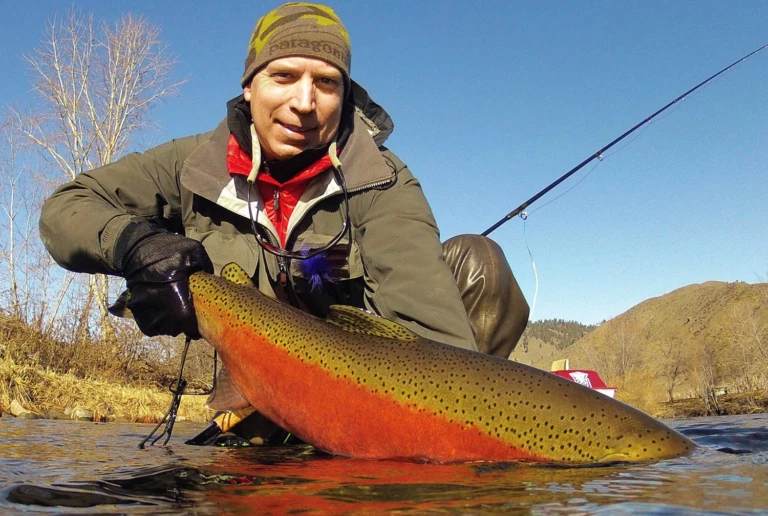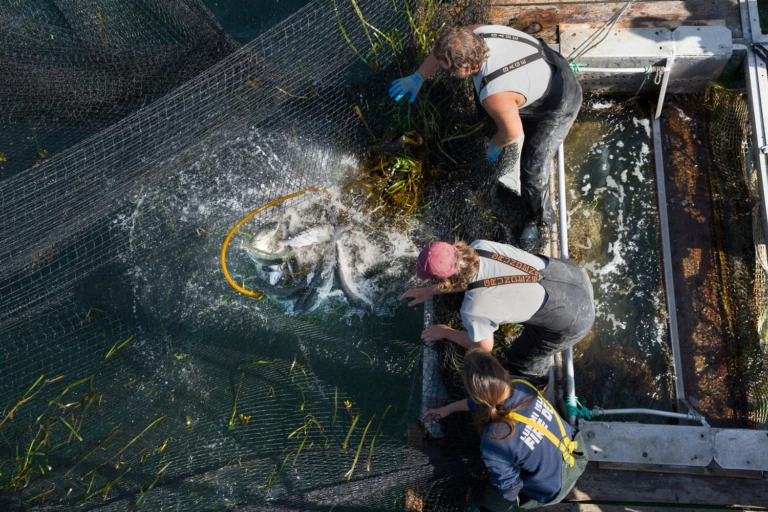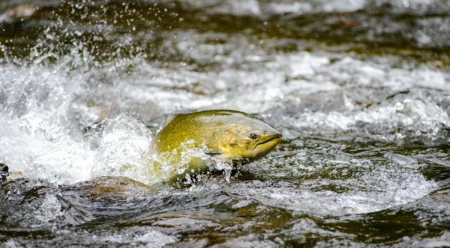What’s a Fish Foodie to Do?
Sustainable Solutions from a Seattle Seafood Chef
When Kevin Davis was a kid growing up in southeast Louisiana, recycling meant filling the pickup with trash and driving down to the river to dump it. Just the same, he and his neighbors had a reverence for the wild. “We prided ourselves on being hunter-gatherers,” he says. He’d bring back coolers full of redfish, speckled seatrout, snapper, crawfish—whatever he could catch—and share it with the community. Then celebrity chef Paul Prudhomme came along with his hit recipe for blackened redfish, and this colorful croaker, little known outside the bayou, was nearly “wiped off the map,” as Davis recalls.
Years later, around the turn of the new millennium, when Davis was a chef himself and cooking fish for throngs of restaurant patrons in Seattle, a young kitchen helper showed him a magazine expose on the swordfish industry. “This is what your generation is leaving us,” the employee said angrily. Davis vowed to do better. When he opened his own restaurant, he named it after the Pacific Northwest’s most iconic game fish, albeit one seriously in decline. At Steelhead Diner you’ll find framed Spey flies on the wall but no steelhead on the menu. Nor will you find farmed salmon or anything from South America or Indonesia. “I only buy West Coast fish,” says the chef-owner, “from Oregon to Alaska. And only healthy stocks.”
Being piscivorous today is a conundrum. On the one hand, wild-caught fish represent a healthful, all-natural alternative to the factory-raised meat most people are eating; on the other hand, we’re depleting the ocean’s resources at an alarming rate through overfishing, habitat destruction, and all the other by-products of modern civilization. While organizations like the Monterey Bay Aquarium have tried to help consumers make informed purchasing decisions with handy smart phone apps such as Seafood Watch, these generalized cheat sheets rarely approach the detail and local knowledge needed in different regions of the country. What’s a fish eater to do?

On the Wenatchee River, Chef Kevin Davis catches and releases a native steelhead, a fish you won’t find on the menu of his restaurant, Steelhead Diner, in Seattle. Photo: Kevin Davis Collection
For Chef Davis, the knowledge of how to buy sustainable fish took years to learn and is now ingrained in his daily routine. But for the average consumer, a trip to the fish market can be flat-out nerve-racking. Do you get the shrimp from Mexico? How about wild Chinook salmon, a favorite menu item for starving Puget Sound orcas? And what’s a tilapia anyway?
Davis’s advice to consumers is to expect to pay a lot for good fish, especially in a restaurant. “If it’s not expensive, you’re not getting the real thing,” he says. And always buy domestic, from a verifiable source. “Support your local commercial fisherman. Ask questions.”
Not every fish slinger appreciates the questions, though. When Johnny Fishmonger isn’t running Fish Business Company in King Salmon, Alaska, he’s asking a lot of questions to sleuth out seafood fraud and mislabeling. Accuracy in seafood labeling is an ongoing issue. Last year, New York State’s attorney general called labeling fraud “rampant,” with as much as 43 percent of New York City’s fish mislabeled. I caught up with Johnny in Portland, Oregon, where he was making the rounds, checking labels and trying to convince merchants to stop buying farmed salmon.
“You can’t trust most of the retailers and distributors,” Johnny says. Just that day he’d busted a high-end supermarket—a popular place with people who try to be responsible customers—for trying to pass off farmed salmon as wild. “The guy behind the counter had no idea. Happens all the time.” He says it’s even worse in the Bay Area and Los Angeles. And in the rural communities? “Forget it.” The fraud touches all species, not just salmon. “A tilapia could be anything.”
Johnny recommends buying from a small Community Supported Fishery (CSF). His bottom-line advice: “Know your commercial fisherman.”
Birgit Cameron, managing director of Patagonia Provisions, which markets sustainably caught pink and sockeye salmon, has taken that advice to heart—notably with the reef-netters of Lummi Island Wild in Washington State, who harvest salmon using an ancient Native American style of fishing that produces excellent quality without bycatch. Reef-netting is the only type of fishing on the high seas, in fact, that is selective, so that endangered stocks such as Puget Sound Chinook can be released unharmed. “We understand it’s hard for seafood buyers to know if their purchase is hurting wild fish or our waters,” says Cameron. “For our sourcing, we brought together prominent scientists and fish conservation groups to create our ultra-stringent Provisions Wild Seafood Sourcing Criteria. It really comes down to asking questions: Where did it come from? How was it harvested? What are the issues there?”

Lummi Island reef-netters fishing for pink salmon. Reefnets stand out as the original and still the best in selective fishing. Photo: Amy Kumler
Community Supported Fisheries such as Lummi Island Wild are increasing their presence in the marketplace, but like agriculture, the seafood industry is dominated by huge conglomerates of the sort Casson Trenor has been trying to rein in for most of his career. Trenor’s long résumé of fisheries activism includes a stint as the seafood sustainability expert at Greenpeace, co-founder of the first sustainable sushi bar in the United States (San Francisco’s Tataki), and most recently, author of a new children’s book called Umijoo aimed at informing the next generation about ocean conservation. Trenor doesn’t mince his words. “Our planet can no longer sustain the kind of indulgence that has dominated our relationship with the ocean for so many decades.” He says we should stop eating top predators and instead focus on fish down the food chain. We also need to avoid destructive practices like trawling and open-water farming that can spread pollution and disease. “Most of all, though, we simply need to eat fewer fish, period.”
The decisions we make about what foods to consume are not easy. Chef Kevin Davis of Steelhead Diner knows all too well the stress of trying to feed his customers local sustainable seafood in the 21st century. “I’m living in a glass house,” he concedes. “Right outside our door the waters are barren, the rivers closed … and I’m selling salmon! Someone could say, ‘If you really want to save salmon, stop serving them.’” For now, Davis feels comfortable selling wild salmon sourced from healthy runs. Catching and eating fish, after all, is one of humanity’s last connections to wild nature—and without those connections, what’s left?
Learn how to be an informed fish eater.
Protect Wild Fish
Tell decision makers to stop wasting money on failed plans and invest in science-based solutions to save endangered wild salmon and orcas: Stop hatcheries, reduce harvest and remove dams.

